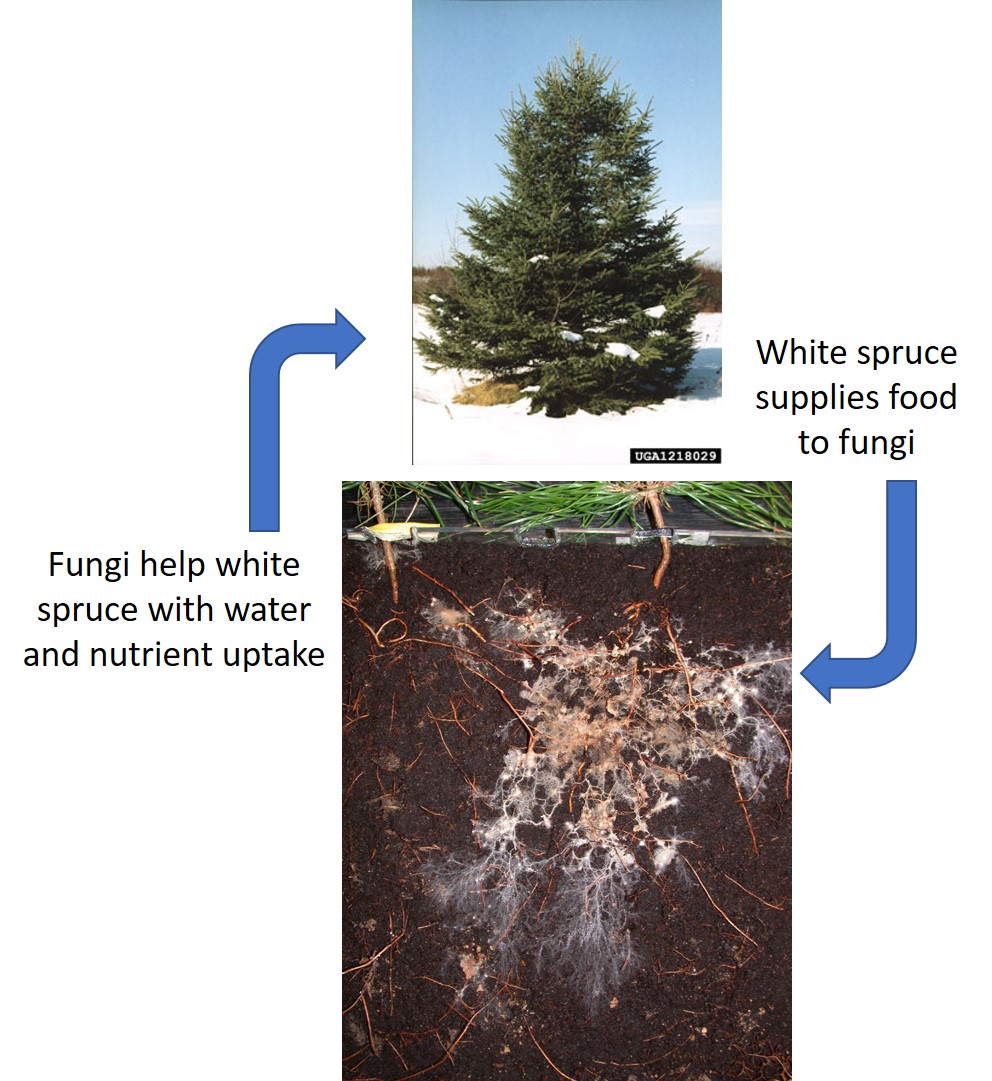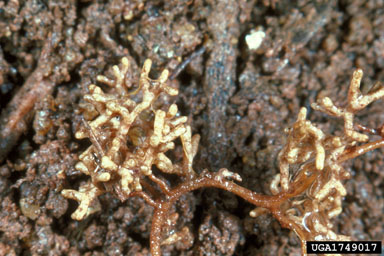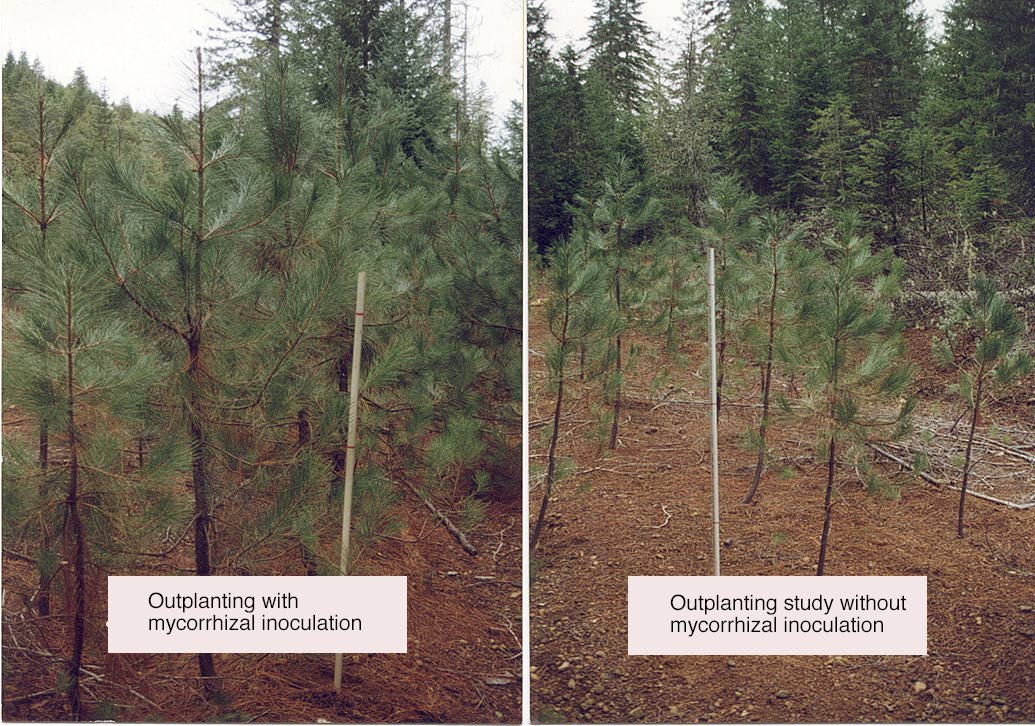Fungi may conjure rotten thoughts. But fungi can be very helpful. Check out how mycorrhizal fungi help trees grow and stay healthy.
Do you think of fungi as bad for you? Like Athlete’s foot (Tinea Pedis) or thrush (Candidiasis)? What about the mushrooms we eat? Or penicillin? Or yeast? Scientists are learning that fungi, in combination with bacteria in and on our bodies, may help to control severe illness.
So, it shouldn’t be surprising that there are beneficial fungi that help trees and other plants.
One group of them is called mycorrhizal fungi (MF). “Myco” means fungus and “rhiza” means root.
They have a symbiotic (mutually beneficial) relationship with tree and plant roots. The tree supplies food to the fungi and the fungi help the tree take in water and nutrients.

#1 Symbiotic relationship between trees and mycorrhizal fungi
Here is how MF actually find tree roots and colonize them:
As roots grow, they send out special fluid material from their root tips called exudates. This material signals the MF to colonize the roots. Each species of MF can only colonize certain species of tree roots.
There are 3 ways the MF can connect with the roots:
- Spores
- Colonized root fragments
- Vegetative hyphae (root like structures).
There are 2 types of MF associated with tree roots:
- Endomycorrhizal fungi
- These live in the root and allow for nutrient exchange within the root cells
- These live in the root and allow for nutrient exchange within the root cells
- Ectomycorrhizal fungi
- These form a covering around the root called the Hartig net that allows for nutrient exchange.

# 2 Ectomycorrhizal fungi
Check out how the many different MF species help a tree:
- Some are better at helping with water uptake.
- These MF absorb and transport water to the root system from the surrounding soil.
- They can increase absorption by as much as 50 times!
- This allows the tree to tolerate stressors like drought.
- Some are better at helping uptake nutrients and making them more available to the tree.
- Some restrict toxins and salts in the soil from reaching the plants root system.
- Some work best during the early growing season.
- Some work best during the warmer drier months.
- Some provide benefit at the end of the growing season and through the winter.

# 3 Comparison of tree growth with and without MF
Scientists are just starting to realize the complexity of the interactions that occur on and in a tree’s root system. Because the system is so complex, and we don’t know all the ways it works, we need to be cautious about how we get involved with the system when we use herbicides, pesticides, plant trees, etc. As we study these interactions more, what else will we discover that adds another layer of complexity to how trees grow?
Much of the information in this blog can be found in this article:





